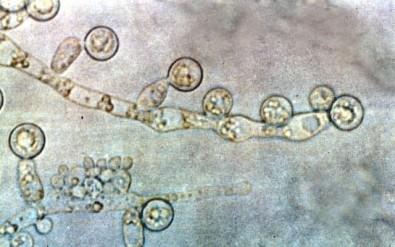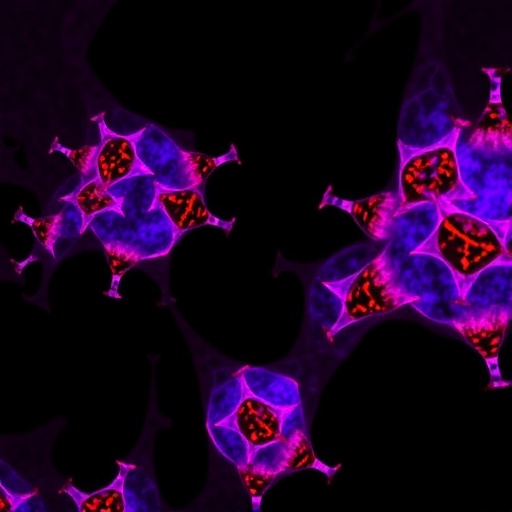Present in the human digestive tract, species of Candida can cause bloodstream infections in patients in hospital intensive care units; the analysis was done at the Complutensian University of Madrid’s Gregorio Marañon Health Research Institute

Credit: EPM-UNIFESP
A group of researchers from Brazil, Denmark, Italy and Spain analyzed 884 samples of fungi of the genus Candida collected from 16 hospitals and found a significant number of clusters in more than one hospital. Clusters are groups of fungal isolates with identical DNA sequences. The discovery may point to the presence of more virulent and drug-resistant varieties.
The study, published
in the journal Frontiers in Cellular and Infection Microbiology, was supported by São Paulo Research Foundation – FAPESP .
Fungi, such as yeasts of the genus Candida, are part of the human gut microbiota – bacteria, archaea and other microorganisms that live in the digestive tract. They cause no problems when the host organism is healthy, but if imbalances occur due to chronic disease or therapeutic procedures involving long hospital stays, they may enter the bloodstream and cause severe, potentially lethal infections.
Candidemia is the most common fungal bloodstream infection in hospitalized patients. It mainly occurs in intensive care units (ICUs) and in patients that received organ transplants or treatment for some kinds of cancer, such as leukemia.
“We must monitor possible sources of infection even more carefully than usual at a time when so many critical COVID-19 patients are being hospitalized. Many remain in intensive care for two to three weeks and are exposed to antibiotics, immunomodulators, invasive medical procedures and/or dialysis,” said Arnaldo Lopes Colombo, a professor in the Federal University of São Paulo’s Medical School (EPM-UNIFESP) and the only Brazilian coauthor of the study.
Most Candida infections occur when the fungus breaks through the intestinal barrier and enters the bloodstream as a result of severe illness and a long hospital stay. Some infections, however, are due to breaches of hand hygiene protocols by health workers and careless handling of patients submitted to invasive medical procedures.
“These factors permit horizontal transmission among different patients, which explains the clusters of infections found in certain hospital wards and less frequently the clusters found in more than one institution,” Colombo said.
In the 884 samples analyzed from 16 hospitals, the researchers identified 723 genotypes of three species: Candida albicans (534 samples), C. parapsilosis (282), and C. tropicalis (68). UNIFESP’s hospital (Hospital São Paulo), the only representative not only of Brazil but also of Latin America in the study, displayed no significant differences from developed-country hospitals in terms of cluster formation frequency.
All the hospitals involved in the study have hospital infection control programs, which should theoretically reduce the number of cross-infections between patients. However, 78 isolates (11% of the total) were found to be clusters, with the same genetic profile infecting several patients. A majority of these clusters (45 or 57%) did not involve more than one hospital, but a small proportion of the total number of isolates (52 or 7.2%) involved different hospitals (21 in the same city and 31 in different cities).
Analysis
The analysis was led by Jesús Guinea at the Complutensian University of Madrid’s Gregorio Marañon Health Research Institute (UCM-IISGM) in Spain.
Isolates were genotyped by species-specific microsatellite markers, which are repetitive DNA sequences usually several base pairs in length. The technique is not as precise as whole-genome sequencing but permits the analysis of many samples for a reasonable cost and with sufficient precision to differentiate samples.
In the future, the researchers will perform whole-genome sequencing on a group of isolates to confirm genetic similarity within clusters and refine the microsatellite marker methodology for genetic studies of Candida. In addition, they hope to determine what makes the strains that form clusters so virulent in order to develop more effective therapies.
“We’ve found that the strains involved in cluster episodes are better at producing biofilm, an extracellular matrix that binds to surfaces and protects them from inhospitable environments, in this case, the human immune system,” Colombo said.
###
About São Paulo Research Foundation (FAPESP)
The São Paulo Research Foundation (FAPESP) is a public institution with the mission of supporting scientific research in all fields of knowledge by awarding scholarships, fellowships and grants to investigators linked with higher education and research institutions in the State of São Paulo, Brazil. FAPESP is aware that the very best research can only be done by working with the best researchers internationally. Therefore, it has established partnerships with funding agencies, higher education, private companies, and research organizations in other countries known for the quality of their research and has been encouraging scientists funded by its grants to further develop their international collaboration. You can learn more about FAPESP at http://www.
Media Contact
Heloisa Reinert
[email protected]
Original Source
https:/
Related Journal Article
http://dx.




